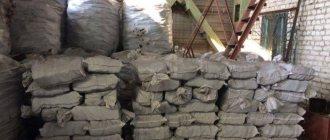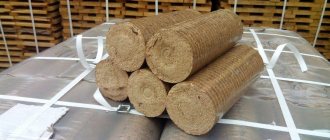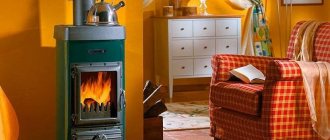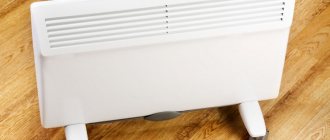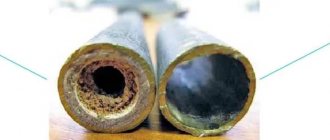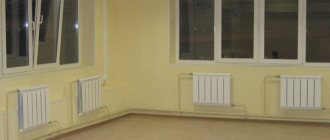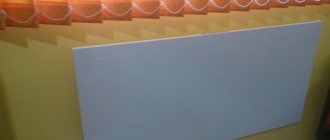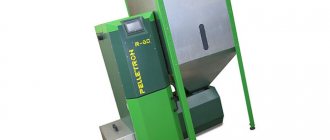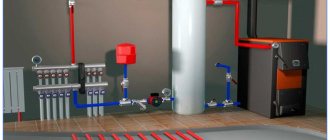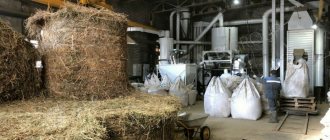Peat is a combustible mineral that is used as an environmentally friendly fuel. It can operate both domestic home boilers and large power plants and industrial boiler houses.
From this article you will learn:
- How effective is peat in terms of heating?
- How to choose the right peat
- What are the advantages and disadvantages of peat compared to other materials?
- How to heat a boiler with peat
- Where and how to store peat
- What are the environmental aspects of using peat as fuel?
This information will be useful if you:
- Are you planning to buy a boiler and are considering peat as one of the fuel options?
- If you are not satisfied with the material that is currently used to heat your house, and you want to switch to peat
- If you have peat on your site and want to know if it can be used for heating
Efficiency of peat as fuel
First, let's talk about numbers. The most important property of any fuel is its energy value. It is expressed in specific heat of combustion.
Specific heat of combustion is the amount of heat that is released when a unit of material is burned.
The following are taken as a unit:
- Kilogram – for solid and liquid fuels
- Cubic meter – for gaseous
The specific heat of combustion is indicated in kilojoules (kJ/kg), megajoules (MJ/kg) or kilocalories (kcal/kg). It is sometimes also measured in kilowatts of electricity (kW) that can be produced by combustion.
Let's look at this with specific examples. Below is a table showing the specific heat of combustion for different types of fuel.
Table of energy value of combustible materials
| Type of fuel | Units | Specific heat of combustion | Equivalent to popular fuels | ||||
| kcal | kW | MJ | Natural gas (m3) | diesel fuel (l) | fuel oil (l) | ||
| Hydrogen | 1 m3 | 28700 | 33,2 | 120 | 3,588 | 2,786 | 2,959 |
| Methane | 1 m3 | 11950 | 13,8 | 50,03 | 1,494 | 1,16 | 1,232 |
| Ethylene | 1 m3 | 11470 | 13,3 | 48,02 | 1,434 | 1,114 | 1,182 |
| Propane | 1m3 | 10885 | 12,6 | 45,57 | 1,361 | 1,057 | 1,122 |
| Liquefied gas | 1 kg | 10800 | 12,5 | 45,2 | 1,35 | 1,049 | 1,113 |
| Oil | 1 l | 10500 | 12,2 | 44 | 1,313 | 1,019 | 0,082 |
| Petrol | 1 l | 10500 | 12,2 | 44 | 1,313 | 1,019 | 0,082 |
| Kerosene | 1 l | 10400 | 12 | 43,5 | 1,3 | 1,01 | 1,072 |
| Diesel fuel (diesel fuel) | 1 l | 10300 | 11,9 | 43,12 | 1,288 | — | 1,062 |
| Fuel oil | 1 l | 9700 | 11,2 | 40,61 | 1,213 | 0,942 | — |
| Natural gas | 1 m3 | 8000 | 9,3 | 33,5 | — | 0,777 | 0,825 |
| Coal - anthracite | 1 kg | 6700 | 7,8 | 28,05 | 0,838 | 0,65 | 0,691 |
| Charcoal | 1 kg | 6510 | 7,5 | 27,26 | 0,814 | 0,632 | 0,671 |
| Coal (humidity 10%) | 1 kg | 6450 | 7,5 | 27 | 0,806 | 0,626 | 0,665 |
| Sunflower husk pellets | 1 kg | 4320 | 5 | 18,09 | 0,54 | 0,419 | 0,445 |
| Peat briquettes (humidity 15%) | 1 kg | 4200 | 4,9 | 17,58 | 0,525 | 0,408 | 0,433 |
| Wood pellets | 1 kg | 4100 | 4,7 | 17,17 | 0,513 | 0,398 | 0,432 |
| Sunflower husk, soybean | 1 kg | 4060 | 4,7 | 17 | 0,508 | 0,394 | 0,419 |
| Paper | 1 kg | 3970 | 4,6 | 16,62 | 0,496 | 0,385 | 0,409 |
| Linen bonfire | 1 kg | 3805 | 4,4 | 15,93 | 0,477 | 0,369 | 0,392 |
| Straw | 1 kg | 3750 | 4,3 | 15,7 | 0,469 | 0,364 | 0,387 |
| Cotton plant - stems | 1 kg | 3470 | 4 | 14,53 | 0,434 | 0,337 | 0,358 |
| Straw pellets | 1 kg | 3465 | 4 | 14,51 | 0,433 | 0,336 | 0,357 |
| Dried wood (humidity 20%) | 1 kg | 3400 | 3,9 | 14,24 | 0,425 | 0,33 | 0,351 |
| Grapevine (20% humidity) | 1 kg | 3345 | 3,9 | 14 | 0,418 | 0,325 | 0,345 |
| Rice husk | 1 kg | 3180 | 3,7 | 13,31 | 0,398 | 0,309 | 0,328 |
| Brown coal (humidity 30-40%) | 1 kg | 3100 | 3,6 | 12,98 | 0,388 | 0,301 | 0,32 |
| Lump peat (humidity 40%) | 1 kg | 2900 | 3,6 | 12,1 | 0,363 | 0,282 | 0,299 |
| wood chips | 1 kg | 2610 | 3 | 10,93 | 0,326 | 0,253 | 0,269 |
| Peat crumbs | 1 kg | 2590 | 3 | 10,84 | 0,324 | 0,251 | 0,267 |
| Sawdust | 1 kg | 2000 | 2,3 | 8,37 | 0,25 | 0,194 | 0,206 |
| Freshly cut wood (humidity 50 - 60%) | 1 kg | 1940 | 2,2 | 8,12 | 0,243 | 0,188 | 0,2 |
Below is the same table in picture form:
As you can see, gases have the greatest energy value, primarily hydrogen. But fresh wood has the lowest rate.
As for peat, it has an average specific heat of combustion:
- Peat briquettes – 4,200 kcal/kg
- Lump peat – 2,900 kcal/kg
- Peat crumb – 2,590 kcal/kg
However, peat briquettes, for example, are close in energy value to coal. On the other hand, to achieve the same amount of energy as burning 1 kilogram of coal, you will have to use 1.54 kilograms of peat briquettes.
It may seem that the difference is insignificant. However, do not forget that you will also be loading more than a kilogram of coal and peat into the boiler. For example, during the cold period (September-April), maintaining a comfortable temperature in a house with an area of 100 m2 will require about 3.5 tons of coal (4.4 m3), or 5.2 tons of peat briquettes (7 m3).
We will return to comparing peat with other materials later, but for now we will talk about how to choose peat.
Quality requirements
The main requirements for the quality of fuel pellets are:
- The granule should be even and smooth.
- No cracks in the granules, no warping or shedding.
- The granule should be tightly compressed.
- The finished product must have the correct percentage of moisture (it should not exceed 15%).
- It is desirable that the pellets be the same size (mainly manufacturers make fuel pellets from 5 mm to 70 mm in length, and from 6 mm to 10 mm in diameter) regardless of the type of fuel pellet.
- The absence or minimum content of impurities (dust, sand) in the finished product, which deteriorate the quality of pellets.
- Color. For wood fuel pellets, it should be light (lighter is higher quality), since the fewer dark or brown inclusions in the pellet, the less bark and impurities it contains. In peat and plant granules it is dark gray or black.
- There should be no fungus or mold on the pellets.
- There should be no chemicals.
We recommend: Rating of gas boilers 2022: review (TOP 12) of the best models
How to choose the right peat for heating
Any type of peat is suitable for fuel, although high-moor and transitional peat are more often used. Low-lying materials have high ash content; such material burns poorly and produces a lot of waste.
The peat group also matters. It depends on the plants from which the breed was formed. These can be trees, shrubs, marsh grasses or moss.
It is better to take high-moor peat for fuel briquettes from the wood-grass, moss or grass group. Transitional from woody, mossy, woody-mossy and grassy. Lowland - from wood, moss and wood-moss.
Let's clarify right away: fresh peat, which has just been extracted from a deposit, is not suitable for fuel. It has too high humidity, a lot of impurities (pieces of wood, bark and other organic matter). The material needs processing. It is crushed, dried, and pressed.
The same applies to situations when you bought peat for a garden or a small deposit turned out to be next to the site. Don't expect to use this material for heating. It has very high humidity and needs to be dried for a long time. In addition, it may turn out that the total mass of peat will contain earth or other foreign elements that are not flammable.
Peat fuel is produced at special enterprises. To do this, raw materials are extracted, crushed and dried, and in some cases also pressed. All this is done using complex and expensive equipment. You cannot prepare similar material with your own hands at home.
As a result, different types of fuel are obtained:
- Peat crumbs
- Semi-briquettes, or sod peat
- Briquettes
- Pellets
Next we will talk in more detail about each of them and how suitable they are for heating.
Peat crumb
Peat chips are called material extracted by milling. The particles in it have sizes up to 60 mm. To use as fuel, milled peat must be dried so that its moisture content does not exceed 40%.
Peat chips are practically not used for heating, as it is inconvenient to work with. It generates a lot of dust and quickly absorbs moisture (which reduces its energy value). But that's not the main thing. The main problem is that by pouring crumbs into a fire, you risk simply extinguishing the flame. Especially if you add a large amount of fuel at once.
Semi-briquettes, or sod peat
Lump peat is obtained directly at the site of development of the deposit.
It is mined in two ways:
- Excavator To do this, blocks about 50 cm thick are cut off. They are sent into a cylinder, where they are pressed. Then they are ejected through rectangular nozzles. The resulting bricks are dried in the sun.
- By deep milling, the rock is crushed to a depth of 40 cm. Then it is loaded into a harvesting machine, where it is pressed into cylinders. As in the first case, they are dried directly on the field.
Sod peat must meet the following parameters:
- Humidity - up to 45%
- Heat of combustion - 12.9 MJ, or 3100 kcal
- Ash content - up to 23%
- The degree of decomposition for the lowland variety is 15%, for the upland variety - 20%
- Clogging (flammable impurities with a diameter greater than 25 mm) - up to 5%
- Sulfur content - up to 0.5%
- Mechanical strength (remaining pieces with a diameter of 25 mm after rolling in the drum) - from 90%
- The content of fines after testing in the drum (particles with sizes up to 25 mm) is no more than 8%
- Bulk density at humidity 25% - 150 kg/m3
All parameters are regulated by GOST R 51062-2011. Lump peat is sold in bulk, in packages and bags. The container must indicate the manufacturer, name of the product, date of manufacture and storage conditions.
Lump peat is one of the cheapest options for heating. But it has a number of disadvantages:
- Semi-briquettes have low strength and may break into pieces during transportation.
- The heat of combustion of such a product is low, but it burns out very quickly (30 kilograms in the boiler firebox will burn in about an hour)
- After combustion, a lot of ash is formed, but it can be used as fertilizer in the garden
- Semi-briquettes often contain branches, large pieces of bark and even pebbles. It is necessary to install special filters in the boiler through which the material is sifted after crushing. Otherwise, all these materials will end up in the ash pan, which will have to be cleaned more often
Peat briquettes
Briquettes are produced in processing plants. Milled peat is used to make them.
Raw materials must meet the following requirements:
- Humidity - up to 50%
- Ash content - up to 1 5%
- Bulk density at humidity 40% - 200 kg/m3
- Contamination with flammable particles with a diameter greater than 25 mm - up to 5%
These are the standards of GOST 13672-76.
The resulting peat is further crushed to obtain a more homogeneous mixture: its particle sizes should be 6-8 mm. Then the material is dried at high temperature to a humidity of 14-16%. Peat briquettes are made under a hydraulic press.
There are improved versions of peat briquettes with various additives. Their strength is increased by mixing crumbs with the plasticizer lignosulfonate (LST), bitumen, resin, carbon dioxide, and petroleum products.
To make briquettes more efficient, coal dust, liquefied gas, petroleum products, sawdust, and agricultural waste are added to them. The combustion heat of such briquettes increases to 4000-4500 kcal. But the environmental friendliness of briquettes containing coal or petroleum products is deteriorating. The ash from them can no longer be used in the garden.
The finished mixture is pressed at a pressure of 80 MPa. Traditional briquettes are rectangular in shape with rounded edges. But now they have begun to produce cylindrical and hexagonal prisms.
Dimensions of rectangular briquettes:
- Length - 8-22 cm
- Width - 4-9.5 cm
- Height - 1.5-7 cm
Dimensions of prismatic and cylindrical peat briquettes:
- Diameter - 5-10 cm
- Height - 5-25 cm
Briquettes come in two varieties. They must comply with the requirements of GOST R 54248-2010. The standards are given in the table below.
| Index | Peat briquettes 1st grade | Peat briquettes 2 grades |
| Humidity | up to 16% | up to 20% |
| Heat of combustion | 15 MJ or 3600 kcal | 13.8 MJ or 3300 kcal |
| Ash content | up to 15% | up to 23% |
| Mechanical strength (remaining particles larger than 25 mm after testing in a drum) | 95% | 94% |
| Mass fraction of fines (number of particles up to 25 mm in diameter after testing in a drum) | 5% | 6% |
Below is the same table in picture form:
Peat briquettes are most often sold in plastic bags. Products must have certificates and accompanying documents. The material should be stored in a dry and cool place, away from open fire (dry peat is highly flammable).
Pressed peat briquettes have greater strength and efficiency than conventional lump material. Thanks to their standard shape, they are easy to transport and store. This product is used both for heating private homes and in enterprises.
Pellets
Peat pellets are cylindrical or round granules. Their length is 1-7.5 cm, and their diameter is 0.5-2.5 cm. The products are made from any type of milled peat. The requirements for the starting material are the same as for peat briquettes.
The production of pellets begins with the preparation of peat crumbs. Large impurities (branches, pieces of bark, stones) are removed from it using screens. Then the material is crushed and sifted through sieves with a diameter of 10 mm. The finished crumb is dried to a moisture content of 8-12%.
After drying, a number of other fillers can be added to the pellets - sawdust, straw, sunflower shells, dry corn stalks and cobs, and cereal processing waste. These additives are ground into flour.
The finished mass is treated with dry steam at a temperature of 80°C. When heated in peat and wood, lignin, bitumen, and resins turn into a semi-liquid state. They envelop small particles and, after cooling, serve as a natural binder. The hot material is pressed.
Second grade pellets are made from wet peat. They are pressed and then sent to dry. Crushed sawdust, straw and other materials are also added to the granules.
All products must comply with the requirements of GOST R 54248-2010.
The table shows the parameters for the first and second grades:
| Index | Pellets 1st grade | Pellets 2 grades |
| Humidity | up to 16% | up to 20% |
| Ash content | up to 15% | up to 15% |
| Heat of combustion | 15 MJ or 3600 kcal | 12.5 MJ or 3000 kcal |
| Bulk density | 600 kg/m3 | 450 kg/m3 |
| Mechanical strength (remaining particles with a diameter of 1 mm after testing in a drum) | from 95% | from 90% |
| Mass fraction of fines (number of particles with a size of up to 0.5 mm after testing in a drum) | up to 5% | to 10% |
Below is the same table in picture form:
Pellets are packed in plastic bags. They must contain the date of manufacture, expiration date of the manufacturer, net weight, and instructions for use.
Pellets are most often purchased for heating private houses and outbuildings. Sometimes they are used in boiler houses to heat small public or industrial buildings.
Summarize:
- Peat briquettes and peat pellets are best suited for heating private houses. They are easy to use and do not create dust. The characteristics of briquettes and pellets are very similar, so the question comes down only to individual preferences. For example, if you have a top-loading boiler, pellets are suitable for you. For side-loading boilers, it will be more convenient to use peat briquettes.
- Sod peat is less practical. It is often packaged in bags, and during delivery the semi-briquettes lose their shape and begin to crumble. The result is pieces of different shapes, and at the bottom of the bag there are small particles and dust.
- It is better not to consider loose peat (crumbs) at all. This is a very inconvenient material that can only be used in industrial boiler houses, where combustion volumes are very high. By pouring such fuel into a domestic boiler, you will most likely simply extinguish the fire.
Prices:
| From 1 to 10 tons | Over 10 tons | up to 1 ton | Up to 500 kg. |
| 6500 rub./ton | 5000 rub. | 200 rub./bag | 200 rub./bag |
We put it in 35kg bags or 1t pallets.
You can buy or place an order by phone, or use the “send request” form on the website.
Advantages and disadvantages of peat
Peat is a good combustible substance, and it is quite convenient to heat small rooms with the same briquettes. But to complete the picture, we would like to dwell in more detail on the pros and cons of this type of fuel, and at the same time compare it with other options.
In everyday life, peat has a number of advantages:
- Suitable for all types of solid fuel boilers Briquettes and pellets are sold in a wide range, and you can easily choose the right type for your boiler.
- Provides more energy than firewood and brown coal. To be more precise, 800 kcal more compared to firewood, and 1,100 more compared to brown coal.
- It flares up quickly, produces little smoke, does not spark. Peat has a low density, and it takes less time to ignite than other types of solid fuel. In some situations, this advantage can also become a disadvantage; we will return to this issue a little later.
- Burns out evenly This is a big advantage. The fact is that many types of fuel have a different composition. For example, a mixture of coal can contain both small grains and large cobblestones. Obviously, the latter will burn longer. And imagine that the bulk of the coal has already burned out, and one particularly large stone is still smoldering. This means you either have to wait until it burns or take it out and throw it away. So, this doesn’t happen with peat: if you put 10 briquettes in the firebox, then they will all burn out in about the same time.
- Maintains temperature for 8-10 hours Which means that even in cold winters you won’t have to get up in the middle of the night to add fuel to the stove. For example, 10-12 peat briquettes are enough to heat a house with an area of 90 m2 for 8 hours.
- Briquettes and granules take up little space, they are convenient to store and transport. In addition, they do not generate dust or pollute the room. Therefore, such fuel can be kept in the house.
The disadvantages of peat fuel include:
- Highly flammable Even a small spark or direct sunlight can cause a fire. Therefore, you need to handle peat very carefully. It is best to store it in a dark room and away from open flames.
- Highly hydrophilic The material absorbs water vapor and loses its effectiveness. Despite the fact that the briquettes are packaged in cellophane, this does not guarantee their complete insulation from moisture. Therefore, places for storing peat should be equipped in dry rooms. This material should not be kept outside.
- Formation of a large amount of ash during combustion If you previously heated, for example, with wood, and now switch to peat, then you will be surprised at how much ash remains from it. But this disadvantage is relative, since the ash can be used as fertilizer.
- Unpleasant odor when burning Peat emits a rather pungent specific “aroma”. We recommend installing boilers in utility rooms with good ventilation.
- More soot accumulates in the chimney than after using black coal or anthracite, but its amount is comparable to brown coal and slightly less than when burning wood.
As can be seen from the description, peat-based fuel has more advantages than disadvantages. No wonder its popularity is growing in many countries around the world. Most often, the material is used in areas rich in peat bogs.
Comparison of peat with other types of fuel
Boilers can use different types of solid fuel. Let's compare their effectiveness. Thermal energy is usually calculated in Gcal. This is the unit of heat required to heat 1000 liters of water. To heat a private house with an area of 200 m2 per month you need approximately 3 Gcal.
Here is the mass of fuel for boilers that must be burned to produce 1 Gcal of heat:
- Firewood – 400-480 kg
- Wood briquettes – 290
- Wood pellets – 260 kg
- Lump peat – 400 kg
- Milled peat (crumbs) – 460 kg
- Peat briquettes and pellets – 280 kg
- Brown coal – 535-630 kg
- Coal (anthracite) – 180 kg
Now let’s compare the prices for these materials*. We calculated how much money needs to be spent on producing 1 Gcal of heat:
- Firewood – 1500-2000 rubles.
- Wood briquettes – 1600-2100 rub.
- Wood pellets – 1700-2000 rub.
- Peat lumps and crumbs – 1800-2000 rub.
- Peat briquettes and pellets – 1400-2100
- Brown coal – 850-1000 rub.
- Coal – 800-900 rub.
*Prices are current for Yekaterinburg as of May 2022.
As we can see from the table, it is most profitable to heat a boiler with coal. But from an environmental point of view, this is the most harmful material. When it burns, sulfur and a large amount of solid carbon are released into the atmosphere. After some time, the area around the house will be covered with a thin layer of soot. Chimneys will have to be cleaned quite often. Ash from such fuel must be disposed of and cannot be used as fertilizer. Our region does not have its own coal (unlike peat), but cheap material is imported from Kazakhstan.
The cost of heating with other materials is approximately the same. But you will need a lot more space to store firewood. Lump peat and crumbs generate a lot of dust and actively absorb moisture. In addition, they heat up and burn quickly. Fuel needs to be added constantly, which is why a larger volume is needed.
If you want to buy environmentally friendly material for a solid fuel boiler that is convenient to store and transport, we recommend briquettes and pellets. Wood and peat are similar in their efficiency and price; they can be used simultaneously in the boiler. But when peat is burned, there is an unpleasant smell.
Kindling the bath
Eurobriquettes are a universal fuel; they can be used to heat all types of stoves and boilers. They can be used in outdoor grills and home fireplaces. At the same time, the consumption of fuel briquettes is always significantly less than conventional firewood.
Many people are interested in whether it is possible to heat a stove with fuel briquettes if it is made of steel, like an ordinary heater? This question is quite logical, since such stoves have restrictions on the calorific value of the fuel; you cannot heat a steel sauna stove with black coal, which emits 4900 kcal/kg of heat. But in the case of Eurobriquettes, less heat is released, which means they can be used to heat a stove in a bathhouse.
For a bathhouse, not only the heat generated is important, but also the duration of burning of wood or alternative fuel. The longer the wood burns with maximum heat release, the better it is for the sauna stove and the sauna itself.
Lighting fuel briquettes is not very easy, the fire does not catch immediately, but after they light up, they will burn and smolder for a couple of hours, which is much longer than the combustion of ordinary firewood. Such a long combustion time of fuel briquettes is explained by their high density and low humidity.
The large amount of heat generated and the long burnout time indicate that the consumption of fuel briquettes for heating a house is much less than that required for ordinary firewood.
Let us note that, according to people’s reviews, you should not completely fill the firebox of a sauna stove with Euro-wood, so as not to quickly reach the maximum heat transfer values.
An interesting point with Eurobriquettes is the residues left after their combustion. Having increased density characteristics, this fuel burns almost completely; it does not leave a large amount of ash, only a small pile of ash. Ash from fuel blocks smells unpleasant, but is an excellent fertilizer.
When Eurobriquettes burn, virtually no smoke is emitted, which is very valuable for maintaining the cleanliness of fireboxes, boilers, and chimneys. According to experts, linden fuel briquettes contain the least amount of resin, so when using such fuel, chimneys and boiler nozzles suffer the least.
How to properly heat a boiler with peat
Peat in the boiler is burned intensively. But for it to ignite, you need to reach a temperature of 150⁰C in the chamber. To do this, first put firewood or wood chips into the ash pan and set it on fire. When the required temperature is created in the chamber, the briquettes are poured.
Please note that the boiler cannot be filled more than 75%! The volume of briquettes during combustion increases by approximately 15%.
After the peat ignites, cover the blower, leaving a small gap. The flame should gradually change its color from red to blue. The airflow can be adjusted until the room temperature is optimal. One load of fuel is enough for 8-10 hours of heating. From time to time you can throw small portions of briquettes into the firebox.
As with any other fuel, you need to wait until the peat has completely burned out, and only then close the boiler plug. Otherwise, carbon monoxide will begin to form in the room.
Basic parameters of pellets
Pellets for heating are granules of white or shades of brown, with a length from 10.00 to 30.00 mm, a diameter of 6.00 and 8.00 mm, less common fuel with a diameter of 10.00 mm, the maximum diameter of the granules is 25.00 mm. The darkening of pellets is associated with the presence in the structure of the material of various non-combustible residues (dust, earth, and a number of others).
The main parameters of pellets are:
- ash content (the lower, the better and the less ash, so the boiler will have to be cleaned much less often);
- humidity;
- calorific value (ENPlus-A1 – 18.0 MJ/kg, ENPlus-A2 – 18.0 MJ/kg, EN-B – 15.0 MJ/kg).
- total length;
- degree of density;
- diameter;
- bulk mass;
- abrasion class.
Where to store peat briquettes
The main problem when storing peat briquettes is their ability to absorb moisture. Therefore, it is better to store them in a dry place. First of all, this applies to material that is sold in bulk or in paper bags.
It is important to protect the briquettes from direct sunlight. But there is always a risk of breaking the seal of the package. Therefore, it is better to move the fuel indoors. It must be well ventilated, otherwise peat dust will accumulate. In summer, the temperature should not rise too high to prevent the briquettes from igniting.
What are pellets?
Pellets
are a granular type of solid fuel, cylindrical in shape, made from compressed waste from agricultural production and the woodworking industry. The main materials for the manufacture of fuel pellets are:
- sawdust, wood chips, bark, slabs of coniferous and deciduous (the best option) wood species;
- peat;
- sunflower husks (the most common solution), rapeseed (the best option), straw of various grain crops, corn, husks, cake and much more;
- charcoal;
- household waste.
The base binder is a substance of plant origin - lignin, a natural polymer contained in almost any plant, capable of being plasticized during granulation under the influence of a sufficiently high operating temperature.
Brown coal
Brown coal
appears in the form of a dense, earthy, woody or fibrous carbonaceous mass with a brown streak, with a significant content of volatile bituminous substances. It often has a well-preserved plant woody structure; the fracture is conchoidal, earthy or woody; color brown or pitch black; burns easily with a smoky flame, emitting an unpleasant, peculiar burning smell; when treated with caustic potassium it gives a dark brown liquid. During dry distillation it forms ammonia, free or associated with acetic acid. Specific gravity 0.5-1.5. Average chemical composition, excluding ash: 50-77% (average 63%) carbon, 26-37% (average 32%) oxygen, 3-5% hydrogen and 0-2% nitrogen.
The photo below shows brown coal.
Brown coal, as the name indicates, differs from hard coal in color (sometimes lighter, sometimes darker); There are, however, also black varieties, but in this case they are still brown in powder, while anthracite and coal always give a black line on a porcelain plate. A significant difference from hard coal is its lower carbon content and significantly higher content of bituminous volatiles. This explains why brown coal burns easier, produces more smoke, smell, and also the above-mentioned reaction with caustic potassium. The nitrogen content is also significantly lower than that of coal.
Literature
- , , “Energy-technological use of fuel”, M., 1956.
- Peat deposits and their integrated use in the national economy, M., 1970.
- The use of peat and depleted peatlands in agriculture, L., 1972.
- Peat in the national economy, M., 1968.
- Lishtvan I.I., Korol N.T., Basic properties of peat and methods for their determination, Minsk, 1975.
- , Peat deposits, M., "Nedra", 1976.
- A. F. Bowman, Soils and the Greenhouse Effect, 1990.
- Bezuglova O.
S. Fertilizers and growth stimulants. Retrieved February 22, 2015.
Articles
- // Great Russian Encyclopedia. Volume 32. - M., 2016. - pp. 313-314.
- Peat // Technical encyclopedia. Volume 23. - M.: Soviet Encyclopedia, 1934. - Stb. 746—763
Regulatory documents
GOST 21123-85 Peat. Terms and Definitions
| (fossil fuels) |
| Coal row |
| Petroleum and naphthoid series |
| Main types | |
| Fossil | |
| Renewable and biological | |
| Artificial |
Technology for the production of earthen granules with video
The production of pellets from the earth itself is not very different from the technology of wood pellets; the following operations also take place:
- Reception and storage of raw materials;
- Regrinding;
- Drying to the desired humidity;
- Granulation;
- Cooling of finished pellets;
- Passing products through a sieve;
- Packaging in big bags or plastic bags.
The production of peat pellets is carried out on presses with a ring matrix. The granules range in size from 6 to 12 mm. If possible, manufacturing technology can be easily automated, which in the future reduces the human factor and improves the quality of the finished product.
Popular models
The modern market of heating units is overflowing with offers of highly efficient models of boilers operating on peat and peat briquettes. Let's note some of them.
The solid fuel peat boiler from the Ukrainian company Kliver is characterized by impeccable quality, 100% guarantee and high efficiency of up to 92%. It can operate on all types of solid fuel, including peat briquettes. They are used to heat large houses outside the city and industrial enterprises. Kliver is able to heat up to 300 m². The structure occupies only 0.5 m² and does not require a special room for installation. The approximate price of a Kliver with a power of 30 kW is 42,000 rubles.
https://youtube.com/watch?v=FEKdWnu1teo
Peat boiler Aremikas Candle S 18 kW
The Lithuanian boiler Aremikas Candle operates on peat briquettes and is used for heating individual housing construction, as well as for heating industrial premises. The price for Aremikas Candle with a power of about 20-35 kW is 120,000 rubles.
The Czech model Dakon DOR F12 is independent of electricity and has a power of 13.5 kW. It is characterized by a unique new design, an improved mechanism that holds the firebox door, and the absence of a top facing cover for easier fuel loading. Price - about 60,000 rubles.
Technological processes for the combustion of biological fuel are developing every day, peat has excellent consumer qualities, so this fuel is highly valued by scientists and specialists. The extraction and use of peat is considered the most promising direction for energy development in the future.
What equipment is used
To produce solid fuel you need the following equipment:
- Crushers, drum or disk type shredders. Used to bring the fraction to the specified size. The smaller the components, the better the quality of the fuel block.
- Calibrators that screen out granules of the required sizes. The rest of the material is sent for re-crushing.
- Hammer mill. Grinds fractions to the state of wood flour.
- Boiler for heating air for drying mass.
- Drying chambers: They dry wet raw materials. Can be used both before crushing and after. The drier the material, the better quality the Euro firewood will be. During drying, electronic moisture meters monitor raw material indicators.
- Drum for mixing components.
- Pressing equipment varies depending on the type of European firewood. This can be a briquetting machine, a press, an extruder. Modern equipment can not only press, but also evaporate moisture and create a protective shell.
- Installation for cooling finished fuel briquettes.
- Sieve. Screens out uncompressed sawdust from finished blocks.
- Packing machine. Fuel briquettes must be wrapped in cellophane to protect them from moisture.
The cost of a complete set of equipment to launch a full-fledged plant for the production of fuel briquettes using the hot pressing method will be several million rubles. You can consider leasing option. You will also need to buy or rent a large room (from 150 square meters) in an industrial area with high ceilings and all the necessary communications.
Pellet varieties
- Higher. This fuel belongs to the premium class. Such granules received an additional name – “white”. Since high-quality raw materials are used in their production, the cost of fuel is higher than other types. They are usually available in several colors: light brown, white, beige. Such granules are made from oak or beech sawdust. The raw material can be any solid wood.
- Industrial. Since the granules contain tree bark, they differ from others in their dark color. Pellets have a high calorific value, but their ash content exceeds 0.7%. The price of industrial pellets is slightly lower than the cost of premium combustible substances.
- Agropellets , the so-called standard. They are one of the types of industrial granules. For production, buckwheat husks or sunflower stems are used. The pellets are dark in color and their ash content is more than 3%. They are characterized by low calorific value, not exceeding 15 MJ/kg. These granules are inexpensive and are used as fuel for industrial boilers.
When choosing pellets for heating your home, you must take into account the following important points:
- availability of a quality certificate indicating the composition of the granules; it must meet current standards; It is better if such pellets comply with European standards such as ENplus;
- calorific value (not less than 4200 kcal/kg);
- ash content (no more than 0.5-1%);
- humidity (no more than 8-14%).
Do it yourself or to order?
Owners of country houses in most cases are enterprising people and can build anything with their own hands, but is it necessary to do this?
Making custom cabinets under the stairs is more expensive than doing the design yourself. But in this case, the owner will receive not only a high-quality piece of furniture, created taking into account all the possibilities of space and wishes, but also a guarantee for the product.
Pellet cost
Let's take the initial data:
- the average cost of industrial pellets in the Krasnoyarsk Territory as of December 2015 is 3,500 rubles per ton (3.50 per kilogram);
- the price of birch firewood is 1,300 rubles per cubic meter, in terms of tons (a cubic meter of dry birch firewood equals 650 kg of weight) is 1,846 rubles per ton (1.85 rubles per kilogram);
- the calorific value of birch firewood is 10 MJ/kg;
- The calorific value of wood industrial pellets is 18 MJ/kg.
In order to obtain 100 MJ of thermal energy, you need 10 kg of firewood (100/10), that is, 18.50 rubles, or 5.5 kg of pellets (100/18), that is, 19.44 rubles. The difference in cost is 1 ruble per 100 MJ. Moreover, it is necessary to note the undoubted advantages of pellets with an ash content of 1.5% over firewood with an ash content of 10%, the difference is obvious. It should be taken into account that the pellet market is growing dynamically, and with an increase in supply, the price will undoubtedly decrease.
Making at home
The technology for producing pellet fuel seems simple, but at home its production is not always cost-effective and quite difficult. One of the main problems when creating a production line in a private sector is the lack of special equipment - a granulator. You can find household models on sale, but their cost is quite high.
Of course, you can make a pelletizer yourself , but this is a difficult task. It is not enough to produce all the parts needed for the machine: precise adjustment will be required during assembly. Before you start making a pellet press with your own hands, you need to properly evaluate your existing skills.
The second problem is the availability of materials for making pellet fuel. It is worth thinking about the possibility of producing granules at home only if it is possible to regularly obtain raw materials, and it should be free or have a minimal cost. Only in such a situation will it be possible to provide yourself with high-quality, environmentally friendly fuel.
It should also be said that the use of machines with flat dies allows one to avoid the secondary crushing cycle. They are equipped with toothed rollers, thanks to which the chips are ground to the required state. It is impossible to do without drying sawdust , and to solve this problem, many craftsmen assemble drum dryers of a simple design. You should also remember that the best material for making pellet fuel is coniferous wood. It is not possible to make pellets from poplar, linden or willow.
Homemade granulator
To make a machine for producing pellets with your own hands, you will need a drawing. Often problems arise already at the stage of searching for it, since masters rarely share the secrets of their work. Some of them offer to purchase a ready-made machine from them, but its cost will be high. To create a homemade granulator you will need to make several main components.
We recommend: Circulation pump for heating: types and characteristics, how to choose the right one, review of popular models and manufacturers, their pros and cons
One of the main ones is the matrix. It should be warned that it will be quite difficult to do it yourself, since you will need professional equipment and good skills in working with it. A similar matrix is used to make mixed feed, and it’s worth trying to purchase it.
If this is not possible, then a round blank will have to be cut from metal with a thickness of 20 mm. Then a mounting hole with a groove is marked on it and drilled for fixation on the electric motor shaft. Holes for pressing should have a conical shape. It is impossible to make them without a special cutter. It should also be said that the outer diameter of the part can be any, and the larger it is, the higher the productivity of the equipment will be.
The second important component of the machine is powerful gear rollers. They are mounted on the shaft using rolling bearings. In addition, an axial hole must be made on the shaft for mounting on a vertical drive. The pressing force of the rollers to the matrix is adjusted using a nut.
The body can be made from pipe or welded from sheet metal. Its internal diameter must correspond to the size of the matrix, ensuring its rotation with minimal clearance. To simplify maintenance of the granulator, the housing should be made collapsible . To make a pellet machine with your own hands, you will need a gearbox. This unit is installed at the bottom of the equipment and is designed to transmit rotation to the working vertical shaft with a frequency of 70−100 rpm.
The matrix and rollers are mounted in the upper part of the granulator. The entire structure, together with the electric motor, is installed on a frame made of an I-beam, channel or angle. It is important to remember that the loads on the frame will be high, and it must easily withstand them.
This design of equipment for the production of fuel pellets is not the only possible one. Having sufficient skills and access to professional metalworking equipment, it is quite possible to make a granulator yourself. In such a situation, the main problem will be the search for accessible and cheap raw materials.
